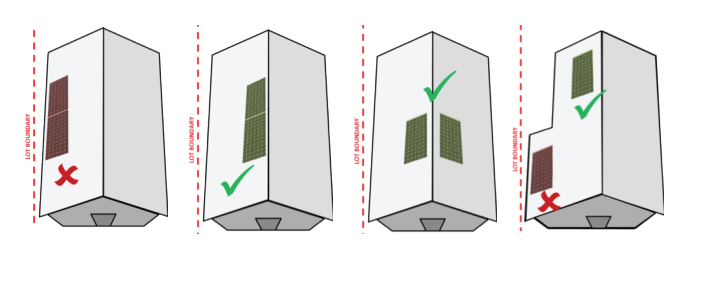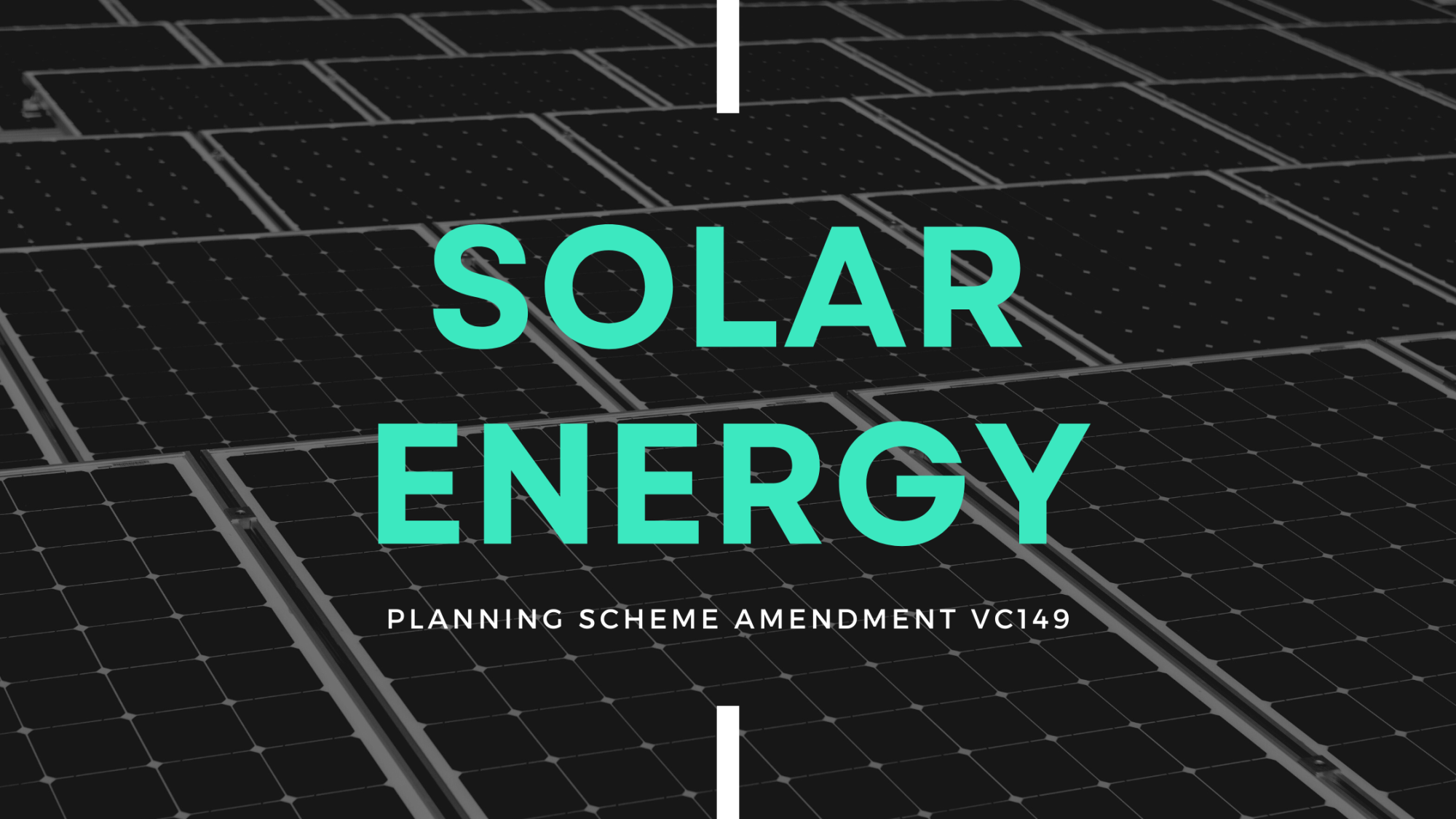Until recently, there has been no planning provisions in place for solar panels in Victoria and no protection for them from overshadowing by new developments. This amendment introduces a firm policy for councils to follow when considering the approval of solar panels as part of a town planning permit application.
This planning scheme amendment VC149 by planning minister Richard Wynne, introduces a firm policy for councils to follow when considering solar panels as part of a town planning permit application approval.
Residential solar panels and solar panel permit applications have become increasingly popular, as residents seek to reduce their energy bills and minimises greenhouse gas emissions but guidelines on new solar energy facilities and how to assess them as part of the planning permit application process have fallen far behind. Until recently, there has been no planning provisions in place for installing solar panels in Victoria and no protection for them from overshadowing by new developments. Unlike overshadowing of private open spaces that are currently regulated by clear perspective standards and objectives, solar panels have been left in the dark when it comes to regulating new developments and assessing their overshadowing impact.
Amendment VC149
In October 2018 Amendment VC149 dealing with solar panelling and solar panel permit applications was introduced by the State Government to the Victorian Planning Provisions(VPP) and all local planning schemes. These new planning requirements covering planning applications were introduced to ensure councils considered the overshadowing impact of a new development on any existing solar photovoltaic (PV) panels that are mounted on the roof of an adjoining property. The new planning requirements apply to all new buildings in all residential zones or Commercial 1 Zones, with a note attached which mentions:
“In this practice note ‘residential zone’ means the General Residential Zone, Mixed Use Zone, Neighbourhood Residential Zone, Residential Growth Zone and Township Zone. It does not include the Low Density Residential Zone.”
To help explain these new planning provisions the government have published a practice note which you can read here.

Along with guidelines for new developments, the new solar panel permit application provisions also give recommendations on the appropriate location for solar panels to minimise the overshadowing impact from neighbouring houses. This is to ensure that it is limited and controlled and also mitigates potential overshadowing caused by future adjoining developments. This also gives more accountability to people installing solar panels.
The practice note offers advice for homeowners to improve energy efficiency and minimise the risk of overshadowing when installing solar panels to their properties by locating panels high on the roof line and as far back from the boundary line as possible.
Solar Panel Planning Permit application
If you are submitting a planning application and the neighbouring lot has solar panels you should include the following additional information:
- The location of any existing rooftop solar panels and the extent of any existing overshadowing.
- The extent of the overshadowing of the rooftop solar panels by the new building and works.
- An outline of how the overshadowing of the rooftop solar panels are proposed to be mitigated.
For the new planning requirements to apply the solar panels must exist at the date of the planning application being made.
Solar Panel Council Approval Considerations
When assessing the overshadowing of solar panels in an application the council will look at the following:
- The extent of the overshadowing of the existing rooftop solar panels by existing dwellings or other permanent structures.
- Whether the existing rooftop solar energy panels are appropriately located.
- The effect of the overshadowing on the existing solar panels
If overshadowing does occur, solar panel council approval processes will have to establish whether it causes an unreasonable impact as part of their assessment. Included in such review may be apartment size or building size, and may factor in other considerations such as garden areas or parking numbers.
What is an unreasonable impact?
Factors considered in determining whether the overshadowing impact on existing solar panels is unreasonable or not include:
- The extent of existing overshadowing of the rooftop solar energy facility from existing buildings or permanent structures.
- Whether the new development meets the side and rear setback and north-facing windows standards for residential development under clauses 54 and 55.
- Whether the protection of the existing rooftop solar energy facility will unreasonably constrain or compromise the proposed new development.
- The type of existing rooftop solar energy facility. A multiple string system is less affected by shading than a single string which is more vulnerable to shading, or any other system features such as micro inverters or bypass diodes which can operate with partial shading.
- Whether the siting of the existing rooftop solar energy facility takes into account the potential future development of adjoining lots promoted or permitted under the planning scheme.
- The extent to which the existing rooftop solar energy facility has been located to protect it from overshadowing through placement higher on the roof and further from existing lot boundaries.
Recommendations vs rules
There is no mandatory requirement for solar panel council approval processes to adhere to the rules regarding solar panels set out by the State Government. Councils are still free to make their own assessment of planning applications as they see fit and do not necessarily have to take into consideration the impacts of overshadowing to solar panels. As it stands a planning permit refusal on the grounds of solar panel overshadowing would be extremely unlikely.
In our experience overshadowing of solar panels has never been cited by councils in their assessment of an application. This may be due to councils including it in their assessment of overshading as a whole. The issue is usually only highlighted to council by objectors who have solar panels on their roofs or solar hot water heating systems and are concerned about the impact of a new house being built. It is more commonly addressed at VCAT when a planning permit application has been refused or an objector has appealed a council’s approval of a planning permit.
The new regulations are guidelines to explain best practice when assessing planning applications rather than prescriptive assessment criteria. Although seemingly long overdue they will now help to clarify a previously unclassified area of planning which had no process in place for assessment. It will take time for the amendments to be adopted and applied in the same way as mandatory planning requirements like Rescode. But as solar and renewable energy continue to become more commonly used these provisions will only increase in their relevance and consideration from councils during the planning application process.
This amendment is a positive step by the Victoria State Government. Incorporating these rules into planning regulation ensures that applications are more fairly assessed. It also means that developers will take into further consideration the impact of their project and it gives more assurances to people with solar panels.
